Excited and curious, we drove closer to the mountainous ranges of the landscape, not knowing quite what to expect. We were on our way to a school visit in Bogotá, to see first hand how the city has integrated citizenship into its education curriculum.
As members of the LMTF 2.0 Working Group on Global Citizenship Education, we were in Colombia on July 15th and 16th for our first meeting. The working group had convened to begin to sketch out a working definition of global citizenship and to design a road map for an inclusive consultation process, a process that will ultimately lead to developing tangible means of integrating and measuring global citizenship in education systems across the world. After hours of debate, brainstorming among groups, individual presentations and sharing of experiences, the working group acknowledged that global citizenship education encompasses a set of skills, knowledge, attitudes, values and actions, including: empathy, critical thinking and problem solving, ability to communicate and collaborate with others, conflict resolution, sense and security of identity, shared universal values, respect for diversity, recognition of interconnected global issues and inter-cultural understanding.
What we saw in Bogotá’s schools aligned with the working group’s understandings of global citizenship, and further helped dispel any critique that education for global citizenship is a hazy and unachievable concept. In a nation that has long suffered at the hands of violence, global citizenship education is well-defined and plays a significant and tangible role in the ongoing peace process. As we surveyed live classrooms, watched presentations and spoke to students, teachers and community members, it was clear how the vision of Bogotá’s education secretary was translating into effective teaching and learning with concrete and measurable outcomes, and how the city’s established framework of “capacidades ciudadanas,” or citizenship skills, was being infused into the existing curriculum.
Teaching and Learning in Action
The schools we visited were located in particularly dangerous parts of the city, and their students hailed from communities embroiled in a range of social issues, including violence, gangs, drugs, poverty, unwanted pregnancy and unstable family structures. Yet these same schools demonstrated how they were able to harness the power of citizenship education to address these existing societal problems, boost the civic participation and social responsibility of their students and help foster a collective and individual identity as Colombians and as citizens of the world.
As we spoke to them, many students articulated a strengthened sense of empowerment, having gained skills that better prepared them to live in and engage with the world around them. Through debates at their own national parliament and in model U.N. structures, they were introduced to their national political system, the role of democracy in Colombia and the relationship between nations. Students spoke fluently about interconnected global challenges like human rights and peacebuilding. Teachers showed us a range of their classes and efforts: sports programs, community engagement initiatives, music from around the world and a host of other creative and artful ways of engraining important life values in their students. Even more impressive was how seamlessly they integrated these values into the traditional curriculum. In a math class, the teacher’s example of calculating the cost of building a desk for the classroom is then used as a lesson on personal responsibility and care for the environment.
A central theme to the city’s citizenship education framework is “convivencia,” or coexistence. Students had taken part in a deliberation project that required them to identify and research a number of contentious debate topics, most recently same-sex marriage, and then engage in discussion as a defender of a particular viewpoint. The students said that through these kinds of activities, they not only learned more about the issue, but also gained a greater appreciation and respect for a diversity of perspectives and peoples. One student said that he and his peers had learned to resolve their differences and disagreements with “words, not with fists and feet.” Pupils and teachers report that classrooms are safer, less aggressive places than they once were and that playground fighting has dropped significantly. Such progress is owed to the inclusion of “manejo emocional,” or emotional management, in the citizenship competencies. Over time, a more peaceful citizenry leads to a more peaceful country.
A Global Dialogue
The notion of global citizenship education has fast become a common currency in policy discussions about the value, importance and purpose of education. But as the discussions among our working group members showed, there are still varying, sometimes competing views—not only on what constitutes global citizenship education but also on how best it can be integrated and measured in our education systems. In Bogotá, the working group decided to pursue creative and innovative ways to scale up and mainstream the global citizenship conversation, taking it beyond policymakers and analysts to provide a space for as wide a range of stakeholders from around the world to engage in the debate.
While we want to broaden the reach of the conversation by scaling it up, we also want to focus in by exploring opportunities to engage at the regional, national and local level throughout. Gauging the relevance and the feasibility for teaching and measuring global citizenship education around the world relies heavily upon understanding the context. Nobody knows the unique context, culture and character of a nation and education system better than those who live and work within them. Such a cross section of input will add greater nuance to the conversation and advance our understanding of the links between local, national and global citizenship.
Young People at the Center
The focus of our consultation will be the central stakeholders in the education system: the students, the young people. While in Bogotá, we spoke with young people who are supporting and informing the secretary of education’s efforts on citizenship education. They speak about the concept and the challenges of global citizenship with such clarity of thought precisely because they were speaking directly from their first-hand experiences.
Youth are a treasure of information, and bring an incredibly valuable and important perspective to this debate. We are committed to pooling and drawing upon the great expertise and insight they have to offer, and are especially keen to elevate the voices of the most marginalized children who often are not included in this kind of debate, using the innovative, interactive and inclusive strategies that the Youth Advocacy Group is renowned for. The dialogue will take place online and offline, and through traditional and non-traditional mediums. Our primary aim is for the voices of young people to inform the working group’s final recommendations on the core global citizenship competencies and how these can be integrated and measured across education systems.
But we have an even bigger ambition: that the conversation will continue, facilitating the kinds of healthy debate and interaction that are bearing such impressive fruits in the classrooms of Bogotá.
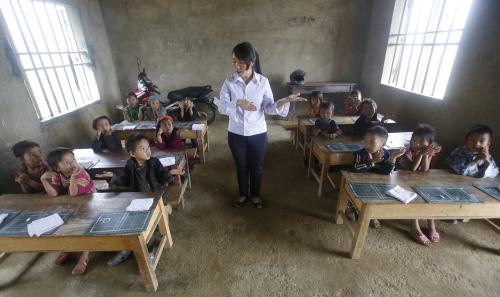
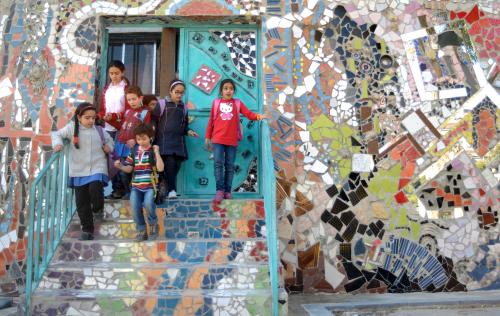
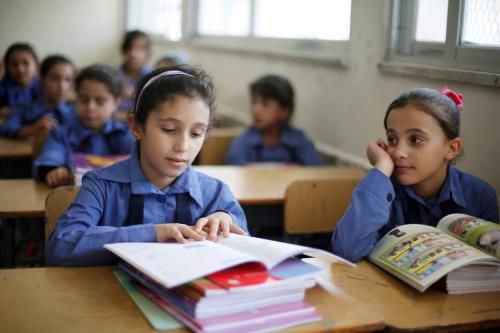
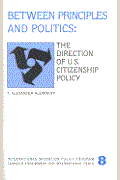
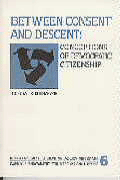

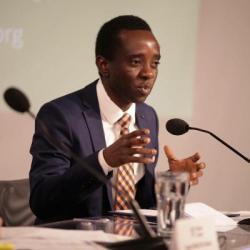


Commentary
Learning from Bogotá: Initiating a Conversation on Global Citizenship
August 6, 2014